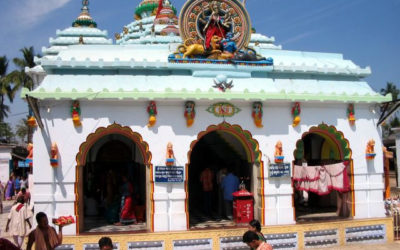Residents of Subhash Nagar say the temple was established in 1887, after almost 50 acres of land was donated by Baba Singh Bhagat Maharaj, an affluent resident. Multiple structures were built to pay tribute to Dronacharya, including a statue of the guru on the land where the Dronacharya Government College now stands. The statue was removed after the land was allotted for the college.
The land donated by Bhagat Maharaj included a lake, near which, it is believed, Dronacharya taught his disciples. Today, this lake has been handed over to the Municipal Corporation of Gurgaon (MCG), after residents who were managing the land were unable to deal with encroachers.
“We tried for a long time to preserve the lake, but when we found we were unable to do so, we handed it over to the MCG.The point is not to own the land, but to preserve the legend and what remains of it,” says Kali Ram Sharma, a member of one of the five families which have been looking after the Dronacharya temple and the land it stands on.
When the temple was initially built, it consisted of only a boundary wall, a single room, and a statue of Guru Dronacharya. Over the years, however, it has been renovated. The temple now has two rooms, and statues of other gods and goddesses. The statue of Dronacharya is at the centre of the temple, whose walls are also adorned with scenes depicting the guru teaching his disciples.
Apart from the temple, locals say its surroundings have also changed in the last century. What was once a vast, open area, surrounded by fields and greenery, is today a crowded, residential area of narrow lanes and innumerable houses that stand cheek by jowl.
“Earlier, this temple used to be clearly visible because it was in an open area, but now it is hidden by the houses around it, so few people even know it exists,” says Vijay Sharma, a resident.
Reiterating this point, Kali Ram adds, “The number of visitors to the temple had reduced over the years. But since the government decided to change the name of the city to Gurugram, more people have started visiting because of increased awareness and media coverage. Earlier, we would get about 70 visitors per week, now almost a 100 people visit… We hope the numbers will increase even more when the name is finally changed.”



0 Comments